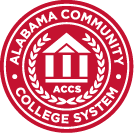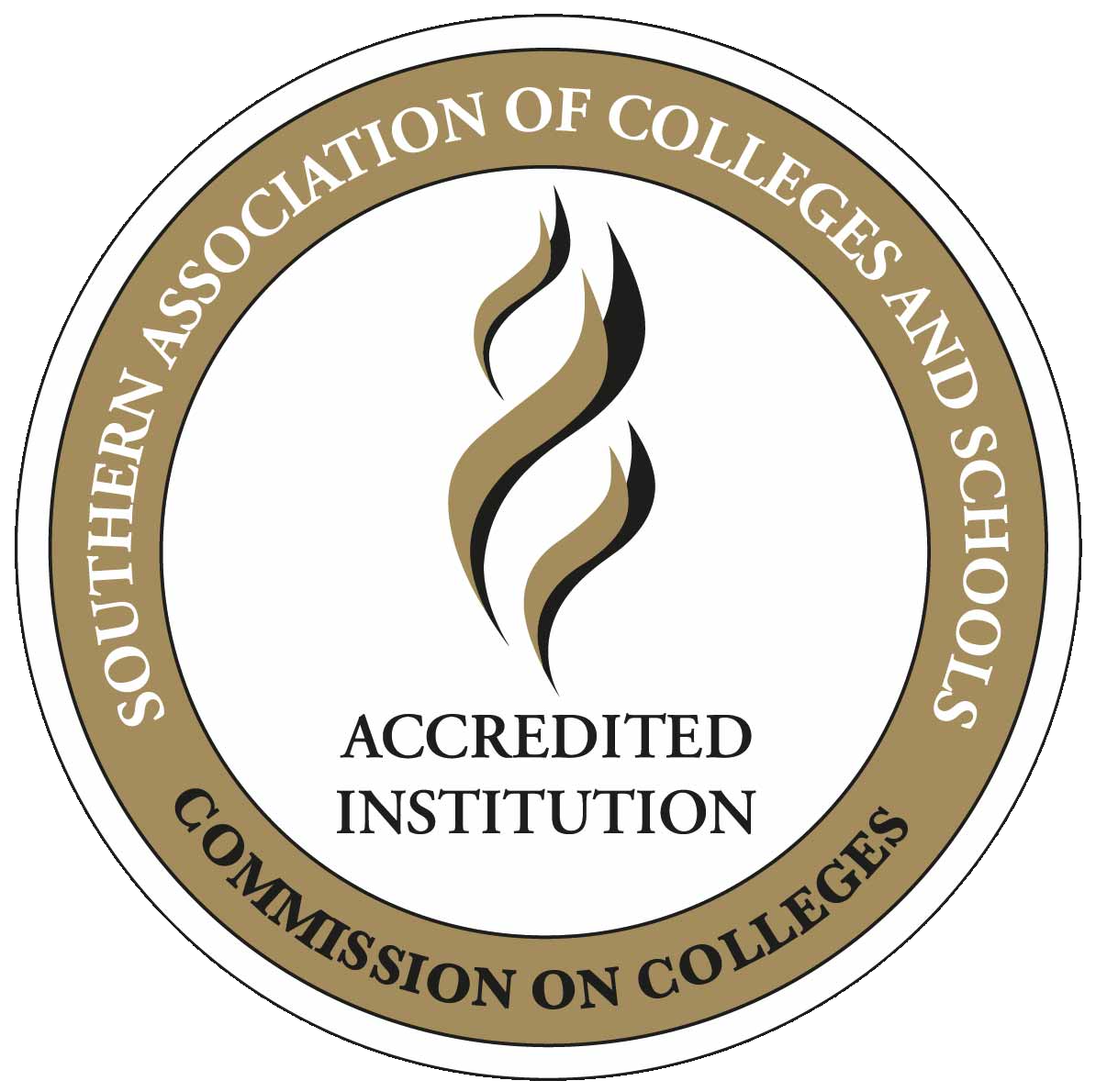Self-regarding institutions know what they want to accomplish, engage in informed discussions based on explicit information, and demonstrate a willingness to change.From Assessing Institutional Effectiveness: Redirecting the Self-Study Process, by Peter Ewell and Robert Lisensky
The philosophy underlying Jefferson State Community College’s institutional effectiveness plan is exemplified by the “self-regarding” institution described by Ewell and Lisensky. The college’s institutional effectiveness plan was developed in the early 1990’s and has been functioning and evolving since that time. The model has three components –purposes, plans, and results– that are refined and modified through the processes of planning, implementation, and evaluation. Each of these is an integral part of our efforts, and the integration of the components/processes is illustrated in Figure 1.
Purposes/Commitments
Jefferson State Community College’s institutional effectiveness efforts begin with the college’s Statement of Philosophy and Purpose, which identifies three broad purposes and lists twelve activities through which the institution attempts to achieve its purposes. These purposes have been operationalized by defining long-range goals at the institutional level and commitments at the operational unit level. Each operational unit of the college, responsible for one or more of the college’s functions, has written a purpose statement and identified commitments that define the expectations for that unit. The unit purpose relates the unit to the college purposes and reflects assigned responsibilities for specific aspects of the college’s purposes. The commitments are written as process statements that describe how each unit expects to achieve its purpose and those of the college for which it has accepted responsibility. With these statements each unit has indicated its understanding of its role in relation to the institution’s purposes and accepted responsibility for contributing to the achievement of one or more of those purposes.
Plans/Planning
Jefferson State Community College’s planning process is linked to the achievement of the purposes stated in the college’s Statement of Philosophy and Purpose and the purposes and commitments of the operational units. Planning includes all college personnel and follows an annual cycle that includes: (1) review of the planning context, (2) review of evaluation results from the previous year, (3) identification of issues and concerns, (4) selection of institutional action priorities and development of unit planning priorities, and (5) budget development (See Figure 2). Personnel involved in the process include Executive Leadership, The College Planning Council, and personnel in each of the college’s operational units. The Planning Council, which reports to the President, is a representative body with membership as follows:
Vice-President, Chair
Dean of Instruction
Dean of Career and Technical Education
Dean of Enrollment Services
Dean of Campus Development/Campus Services
Director of Student Services
Chief Information Officer
Director of Financial Services
Director of Institutional Effectiveness
Director of Learning Resources
Director of Human Resources
Associate Deans
Director of Center for Community and Corporate Education
Faculty Senate President (elected)
Faculty Representative (elected)
Faculty Representative (elected)
Staff Representative (elected)
Student Government Association President (elected)
The College Planning Council initiates the planning cycle with a review of the previous year’s results. Included in this review are the college purposes, planning assumptions and long-range goals. Because the college’s Statement of Philosophy and Purpose provides both general direction and parameters for planning, the Council reviews the statement each year and either reaffirms it or recommends that the President appoint an ad hoc committee to consider revisions. When the decision is to initiate a broad review, the ad hoc committee is charged with using in its work “a college-wide, consensus-building process, thus continuing to provide for broad-based support for and knowledge of the institution’s purpose and expected educational results.” After being approved at the college level, the President submits the institutional statement of purpose to the Alabama State Board of Education, the college’s governing board.
After the Council’s review of the context for planning, the Vice-President makes a presentation concerning the results achieved in the previous year and the status of the current year, including any issues or concerns that he believes should be addressed in planning for the coming year. Next, the President’s report addresses not only her issues and concerns but also those identified by the Alabama State Board of Education and the Chancellor’s Office of the Alabama Department of Postsecondary Education.
After considering the context within which the college must operate, reviewing the results achieved during the previous year and discussing issues and concerns for the institution, the Planning Council recommends Institutional Action Priorities for the coming year to the President. This has been an annual process since the first set of action priorities were established in 1988.
While the deliberation is still an annual process, it became apparent to the Planning Council that most institutional-level priorities could not be adequately achieved within one academic year; so, beginning with the 1994/95 and 1995/96 academic years, the Council began recommending two-year priorities. In the second year of the priorities, the Council assesses achievements of the first year and then affirms or modifies the priorities to be recommended for the second year. After institutional priorities are approved by the President, planning moves to the unit level with the long-range goals providing the context and the Institutional Action Priorities providing the emphasis for the development of unit plans.
Operational unit requests for personnel, equipment, supplies, and travel are considered by the college’s executive leadership in terms of institutional priorities and projected revenues in developing the proposed college budget. Upon receipt of the final allocation of funds from the state, the institutional budget is balanced with available revenues, approved by the President, and submitted to the Alabama State Board of Education for adoption. After the budget has been approved at the state level, the college plan and unit budgets are revised as appropriate and distributed.
Results/Evaluation
Jefferson State Community College’s evaluation plan examines the college from four perspectives: operational units (instructional and services), students, personnel, and the institution as a whole (Figure 3). Assessment from each perspective requires that the college look realistically and critically at what it expects to achieve and what it has actually accomplished. To do this, the college first determined what should exist, identifying the benchmarks against which achieved results will be assessed. For the institution and its operational units, these benchmarks are stated as expected results; for students, they are expressed as expectations in the form of course and program competencies/outcomes to be attained by the students; and for college personnel, they are evaluation criteria derived from the skills and knowledge required for effective job performance.
Evaluation of effectiveness at the institutional and operational unit levels begins with outcomes, benchmarks, and performance measures. These are used as the basis for regular and systematic evaluation of both programs and services of the college. At both the institutional level and the operational unit level, the intent of evaluation is to provide information that can be used to improve programs and services by comparing the results achieved with those expected or intended.
Unit Evaluation: Each instructional and service unit engages in regular program/service self-study that results in a report that is submitted to one of two review boards (Instructional Unit Review Board or Service Unit Review Board).Each unit is required to conduct an annual assessment record and a program review every three years.
Annual Assessment: Review at this level is used to report annually on the level of performance achieved during the year, to establish trends in performance, and to identify problems and concerns.
Program Review: Evaluation at this level occurs every three years for all units. The primary purpose of the analysis is unit improvement. It takes into consideration the achievement of the units’ expected outcomes and compliance with any external regulations or requirements, and it is flexible enough to allow each program/service to investigate its unique concerns.
The units make recommendations for themselves; and, the respective review board may concur with the unit’s recommendations or make additional recommendations of its own. Reports from the review boards go to the respective units and are also submitted to the appropriate administrator who is over the area being studied, typically the Vice-President or a Dean. Units address recommendations in the next planning cycle and report on actions in subsequent reviews.
Student Assessment: In addition to assessment for course placement in mathematics, English, and reading and assessment for purposes of assigning course grades, program and general education outcomes of certificates and degrees are assessed in the following ways:
- Student self-report of growth in general education competencies and satisfaction with preparation for employment and/or transfer to baccalaureate programs;
- Student follow-up data on in-field employment and/or subsequent educational achievement.
- Reports from four-year institutions on the performance of transfer students.
- Licensure/certification examination results.
- Employer satisfaction with preparation of students.
- Assess the achievement of student learning outcomes.
In order to ensure that both instructors and students have a clear understanding of the goals and content of their courses, competencies, specific objectives, and student learning outcomes have been agreed upon for each course. General education and program outcomes have also been developed and matched with course outcomes to ensure that there are opportunities within each program curriculum for the student to attain each required outcome.
Personnel Evaluation: Personnel at the college fall into three evaluation categories: administrator, faculty, support staff. All personnel are evaluated annually using standard forms that include evaluation criteria derived from the skills and knowledge required for effective job performance. Issues and concerns are addressed in plans for the following year. Procedures for personnel evaluation are published in the Jefferson State Community College Handbook.
Institutional Evaluation: The overall success and vitality of the institution is assessed at the institutional level by Executive Leadership and reviewed by the College Planning Council. Assessment at this level requires compilation and analysis of data from the operational units having commitments linked to the achievement of the institutional purposes. Particular emphasis is given to evaluation of the results from implementation of the previous year’s unit planning priorities and the progress made on the Institutional Action Priorities established for that year.



